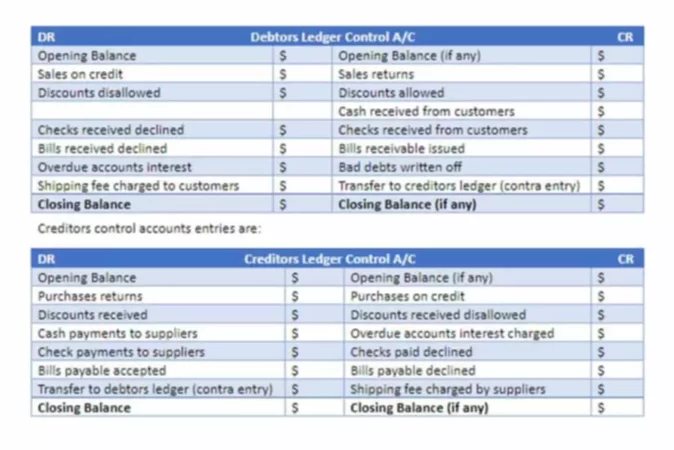
For example, a business customer places a reservation cash deposit on a Tesla automobile, expecting delivery to occur several months later. Recording accrued revenue as a part of accrual accounting can help a business be agile by anticipating expenses and revenues in real-time. It can also help monitor the profitability of the business and identify potential problems well in advance.
It is an alternative to the cash accounting method and is necessary for companies that sell products or provide services to customers on credit. Under the U.S. generally accepted accounting principles (GAAP), accrual accounting is based on the revenue recognition principle. This principle seeks to match revenues to the period in which they were earned, rather than the period in which cash is received.
- Accruals are revenues earned or expenses incurred that impact a company’s net income on the income statement, although cash related to the transaction has not yet changed hands.
- In double-entry bookkeeping, the offset to an accrued expense is an accrued liability account, which appears on the balance sheet.
- When you finally send the invoice, you’ll convert it into the accounts receivable and then convert it into cash once the payment is made.
- Accrual accounting is always required for companies that carry inventory or make sales on credit, regardless of the company size or revenue.
- Under the U.S. generally accepted accounting principles (GAAP), accrual accounting is based on the revenue recognition principle.
Pied Piper IT Services agrees to build a flight navigation software for XYZ airlines in 12 months for a sum of $120,000. According to the contract, Pied Piper is expected to deliver the first milestone of the software in 6 months which is valued at $60,000. A second milestone will be delivered at the end of another 6 months, indicating the end of the contract. For example, ABC marketing agency signs up for a marketing automation software, ‘Yoohoo’, that’s billed quarterly at $600 for a three-user package. Twenty days into the subscription period, the agency realizes that they need two more users to access the software. Furthermore, the agency also requested Yoohoo to provide an exclusive training session.
Debit balances related to accrued revenue are recorded on the balance sheet, while the revenue change appears in the income statement. Accrual accounting is always required for companies that carry inventory or make sales on credit, regardless of the company size or revenue. This method allows the current and future cash inflows or outflows to be combined to give a more accurate picture of a company’s current and long-term finances. For example, many salaried employees are paid by their company every two weeks; they do not get paid at the end of each workday.
Accrued Revenue: Definition, Examples, and How To Record It
From that point until the end of the contract, the SaaS company will have $1000 in accrued revenue from that particular customer. The credit for sales and services is to a revenue account in the general ledger chart of accounts. In the case of interest income, the credit is to interest income account in the general ledger chart of accounts. To understand accrued revenue vs deferred revenue (unearned revenue), think of them as opposites. Accrued revenue is when a business has earned revenue by providing a good or service to a customer, but for which that customer has yet to pay.
The standard procedure for customer invoice recording will record accounts receivable and sales revenue through a journal entry for accounts receivable subsidiary ledger activity. When the customer is billed, the following adjusting entry is made to reverse the original entry to record accrued revenues. Accrued revenue for product sales and services recognizes revenue and a current asset before the customer is billed and cash is collected for the revenue. Accrual records payments and receipts when services or good are provided or debt is incurred. Accrual accounting uses the double-entry accounting method, where payments or reciepts are recorded in two accounts at the time the transaction is initiated, not when they are made.

This would involve debiting the “expense” account and crediting the “accounts payable” account. The effect of this journal entry would be to increase the utility company’s expenses on the income statement, and to increase its accounts payable on the balance sheet. On the other hand, if the company has incurred expenses but has not yet paid them, it would make a journal entry to record the expenses as an accrual. This would involve debiting the “expenses” account on the income statement and crediting the “accounts payable” account. The reverse of accrued revenue (known as deferred revenue) can also arise, where customers pay in advance, but the seller has not yet provided services or shipped goods. In this case, the seller initially records the received payment as a liability and later converts the entry into a sale when the transaction is completed.
What’s the Difference Between Deferred and Accrued Revenue?
Accrued revenues are recorded as receivables on the balance sheet to reflect the amount of money that customers owe the business for the goods or services they purchased. As a SaaS company, you will likely encounter accrued revenue, especially if you also have a B2B model. The difference in accrued revenue vs. deferred revenue primarily relates to whether the cash receipt was received after or before the product was shipped to the customer or the services were performed.
Therefore, prior to issuing the 2019 financial statements, an adjusting journal entry records this accrual with a debit to an expense account and a credit to a liability account. Once the payment has been made in the new year, the liability account will be decreased through a debit, and the cash account will be reduced through a credit. On the financial statements, accrued revenue is reported as an adjusting journal entry under current assets on the balance sheet and as earned revenue on the income statement of a company. The use of accrual accounts greatly improves the quality of information on financial statements. Unfortunately, cash transactions don’t give information about other important business activities, such as revenue based on credit extended to customers or a company’s future liabilities. By recording accruals, a company can measure what it owes in the short-term and also what cash revenue it expects to receive.

The other side of the balancing entry is the revenue account (or accounts) flowing to the income statement. The second example is accrued revenue for interest income on a loan earned in August for which cash has not yet been received from the payor but is due in September. Accrued revenue accounting doesn’t reflect cash flow, as does the cash method of accounting.
Accrued Revenue Explained
This is important because financial statements are used by a wide range of stakeholders, including investors, creditors, and regulators, to evaluate the financial health and performance of a company. Without accruals, a company’s financial statements would only reflect the cash inflows and outflows, rather than the true state of its revenues, expenses, assets, and liabilities. By recognizing revenues and expenses when they are earned or incurred, rather than only when payment is received or made, accruals provide a more accurate picture of a company’s financial position. Accruals and deferrals are the basis of the accrual method of accounting, the preferred method by generally accepted accounting principles (GAAP). Using the accrual method, an accountant makes adjustments for revenue that have been earned but are not yet recorded in the general ledger and expenses that have been incurred but are also not yet recorded. The accruals are made via adjusting journal entries at the end of each accounting period, so the reported financial statements can be inclusive of these amounts.
Oracle Apps works with financial applications, including the Financials Accounting Hub (FAH), to drill down to the detailed accrual journal entry level. Accrual accounting is required by U.S.-based GAAP (generally accepted accounting principles) instead of cash accounting. The first example relates to product sales, where accrued revenue is recorded as a debit, and the credit side of the entry is sales revenue.
COMPANY
In 2014, the Financial Accounting Standards Board and the International Accounting Standards Board introduced a joint Accounting Standards Code Topic 606 Revenue From Contracts With Customers. This was to provide an industry-neutral revenue recognition model to increase financial statement comparability across companies and industries. Public companies had to apply the new revenue recognition rules for annual reporting periods beginning after December 15, 2017. The received capital can then be moved to other accounts, such as free cash, if needed—the company uses the same double-entry method to enter which account the capital came from and is moved to. Accrued income is the money a company has earned in the ordinary course of business but has yet to be received, and for which the invoice is yet to be billed to the customer. Though accrued revenue represents revenue that you have earned but has not been paid for, it qualifies as an asset.
